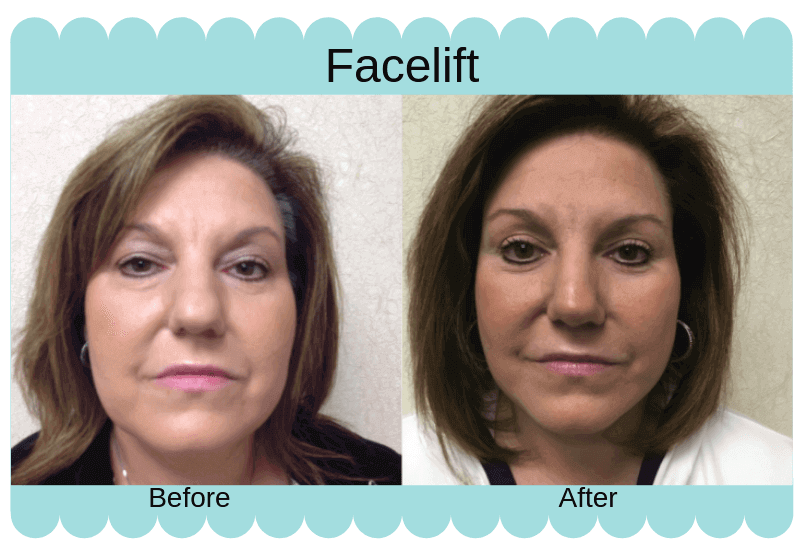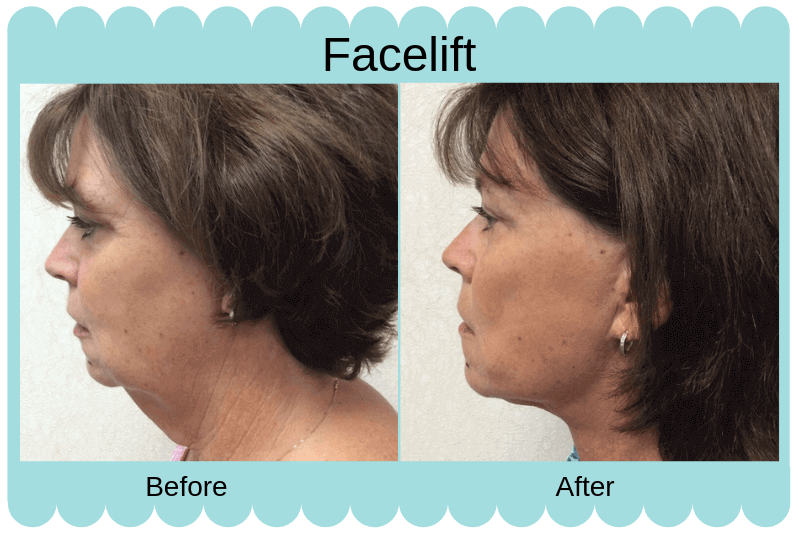What Is the Right Age for Facelift Surgery?

One of the most common questions people ask is: What is the right age for a facelift? The answer varies depending on factors like a patient’s aesthetic and personal goals and skin elasticity. This blog will guide you through the best facelift options for every age group, as well as ways to get the most comprehensive results by combining procedures.
When Is the Best Time to Get a Facelift?
Facelift surgery, also known as a rhytidectomy, is a popular cosmetic procedure designed to restore a youthful appearance by tightening sagging skin, reducing wrinkles, and enhancing facial contours. It works by lifting and repositioning the underlying facial muscles and tissues while removing excess skin, resulting in a smoother, firmer look. A facelift can address deep creases, jowls, and loss of skin elasticity caused by aging.
A facelift can benefit individuals at different stages of life. Here’s what to consider at each age:
In Your 30s
Most people in their 30s do not need a full facelift, but they may start noticing early signs of aging. Non-surgical treatments like dermal fillers and BOTOX® Cosmetic can be effective for maintaining a youthful appearance by reducing fine lines and adding volume to areas that are beginning to lose elasticity. Mini facelifts are a viable option for some patients in this age range.
In Your 40s
Fine lines, wrinkles, and mild skin laxity become more noticeable in your 40s, making it an ideal time to consider facial rejuvenation. A mini facelift is a great option for those looking to refresh their appearance without undergoing a full facelift, as it targets early signs of aging with less invasive techniques and shorter recovery times.
In Your 50s and 60s
Deeper wrinkles, volume loss, and significant skin sagging often appear in your 50s and 60s, making a traditional facelift an excellent option. This procedure provides dramatic and long-lasting results by lifting and tightening the skin, restoring a firmer and more youthful look while addressing deep facial creases and sagging jowls.
In Your 70s and Beyond
As you enter your 70s and beyond, skin elasticity continues to decline, and deep creases may form. A traditional facelift can still be performed if you are in good health, and it can provide transformative improvements by tightening sagging skin and refining facial contours, helping to achieve a refreshed and rejuvenated appearance.
What Are My Facelift Options?
There are different types of facelifts to suit various needs and lifestyles. For example, a busy professional in their 40s looking for subtle rejuvenation might prefer a mini facelift with minimal downtime, while someone in their 60s seeking more dramatic results may opt for a traditional facelift.
Factors such as skin elasticity, recovery time, and desired results all play a role in deciding the best option. Consulting with a board-certified plastic surgeon like Dr. Robert Wald can help you determine the most suitable procedure for your specific concerns.
Traditional Facelift
- Addresses deep wrinkles, sagging skin, and volume loss in the midface, jawline, and neck.
- Involves incisions around the hairline and behind the ears.
- Offers long-lasting, natural-looking results.
Mini Facelift
- Ideal for individuals with mild to moderate skin laxity.
- Uses smaller incisions and requires less downtime than a traditional facelift.
- Great for those in their 40s and 50s who want subtle improvements.
In-Office Facelift Under Local Anesthesia
- A minimally invasive option performed under local anesthesia.
- Shorter recovery time compared to traditional facelift surgery.
- Provides a refreshed look with less downtime.
What Procedures Can You Combine With a Facelift?
For enhanced and comprehensive results, many patients choose to combine a facelift with other facial procedures.
Blepharoplasty
Blepharoplasty, also known as eyelid surgery, is a procedure designed to rejuvenate the appearance of the eyes by removing excess skin, fat, and muscle from the upper and/or lower eyelids. The surgery works by creating small incisions along the natural creases of the eyelids, allowing the surgeon to carefully remove or reposition tissue to create a smoother, more youthful look. The procedure:
- Reduces droopy eyelids and under-eye bags.
- Creates a more awake and youthful appearance.
Forehead Lift (Brow Lift)
A forehead lift, also known as a brow lift, is a procedure that lifts sagging brows and smooths forehead wrinkles to create a more youthful and refreshed look. The surgery involves making small incisions along the hairline to reposition the brow and tighten excess skin. The procedure:
- Lifts sagging brows and smoothens forehead wrinkles.
- Enhances the overall results of a facelift by creating a balanced, refreshed look.
Interested in a Facelift in Orange County, CA?
If you’re considering a facelift, Dr. Robert Wald can help you determine the best procedure for your needs. Call (714) 312-3549 or visit our contact page to schedule a consultation.











